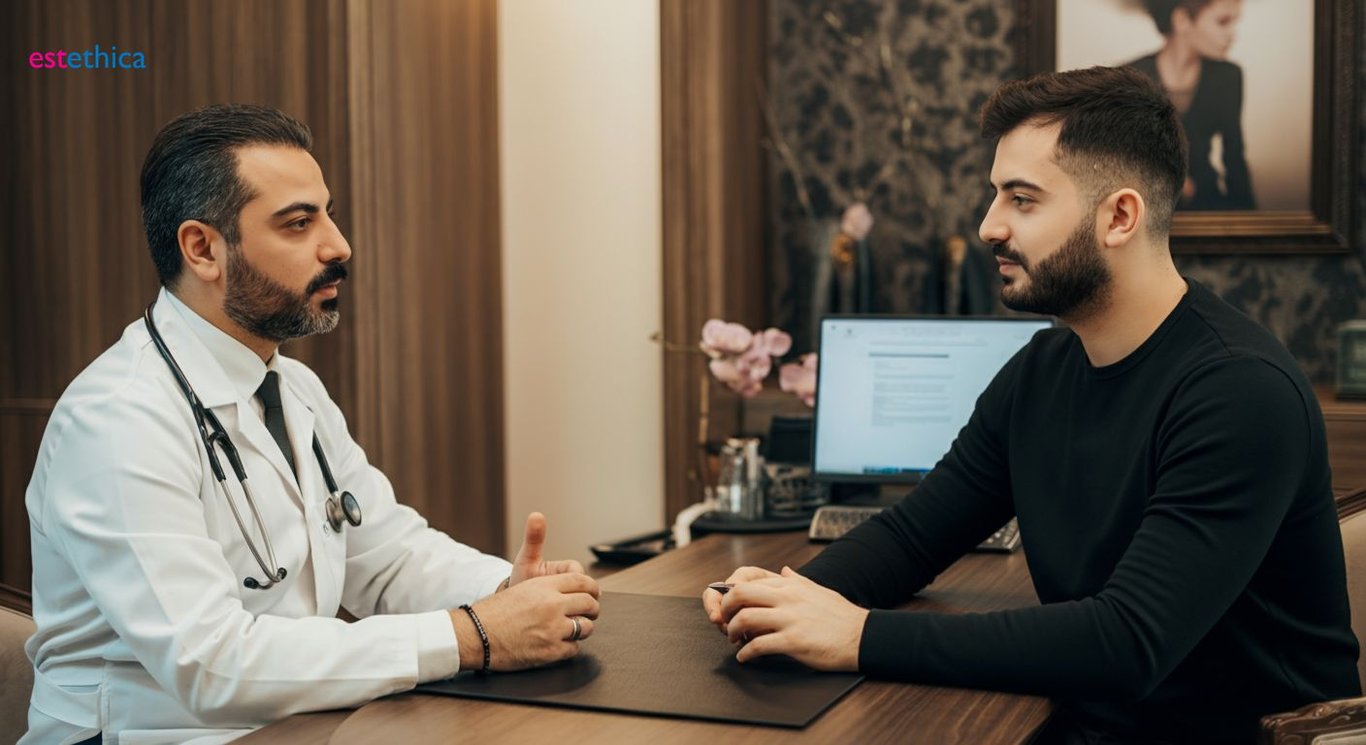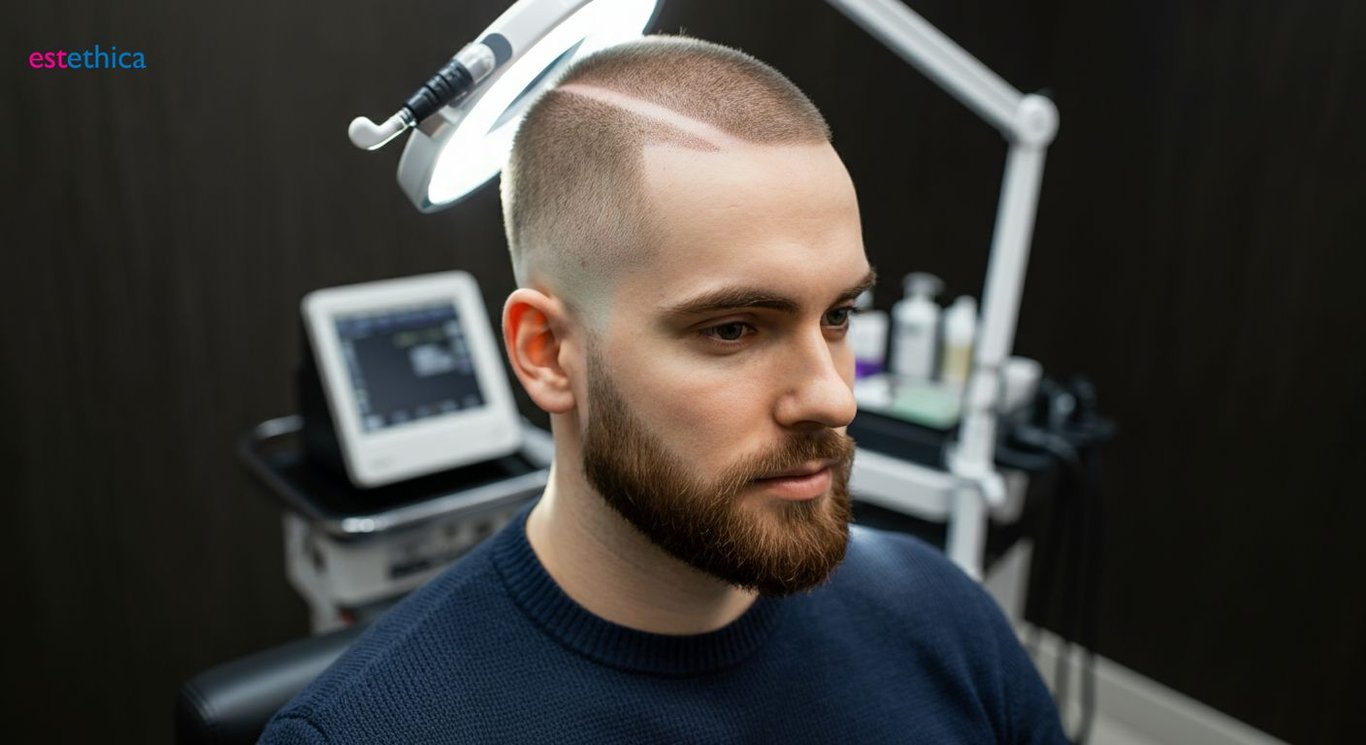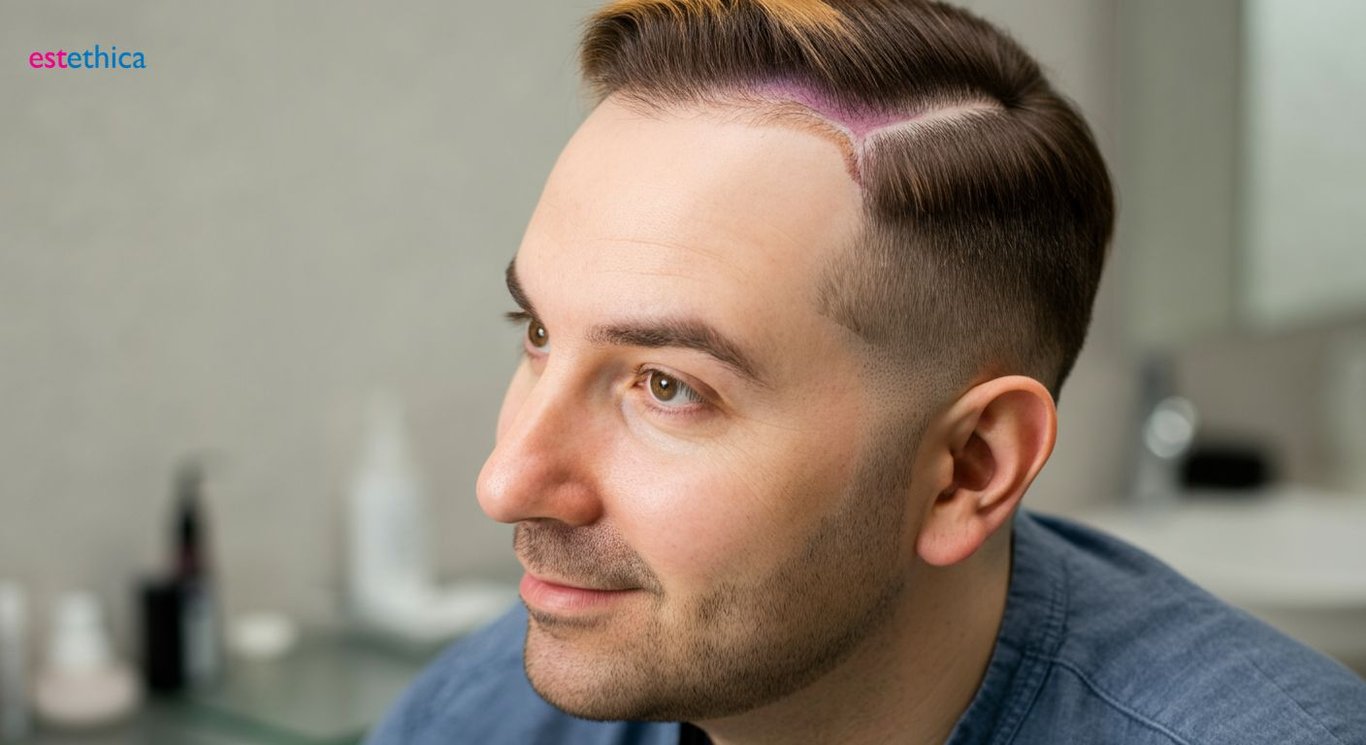Hair Transplant: Reclaim Your Hairline, Renew Your Life
Discover estethica's advanced hair transplant methods and begin your journey to hair restoration today.
Hair transplants have revolutionized the world of hair restoration, offering individuals a genuine chance to reclaim their hairline and invigorate their lives. For those grappling with hair loss, understanding the comprehensive treatment options available is crucial in making an informed decision. Whether considering it for aesthetic purposes or to boost self-confidence, a hair transplant could be the key to a transformative appearance.
Understanding Hair Loss Treatment Options: Is a Transplant Right for You?
Exploring Non-Surgical Hair Loss Treatments
When exploring options for hair loss treatment, it's important to consider both surgical and non-surgical approaches. Non-surgical methods offer a range of solutions that can help manage hair thinning and promote hair growth without invasive procedures. These options are often the first line of defense against hair loss, suitable for those in the early stages or those who prefer to avoid surgery.
- Topical Medications: Minoxidil, a widely recognized topical solution, can stimulate hair follicles and encourage hair growth. It requires consistent application and may take several months to show noticeable results.
- Hair Growth Shampoos: Shampoos containing ingredients like ketoconazole or biotin can improve scalp health and potentially support hair thickness. These are often used as an adjunct to other treatments.
- Low-Level Laser Therapy (LLLT): LLLT devices, such as laser combs or helmets, emit light that stimulates hair follicles. Consistent use is necessary, and results vary among individuals.
These treatments can be particularly effective when tailored to the individual's specific type and stage of hair loss. They offer a practical way to manage hair thinning. These non-surgical solutions can improve the appearance and health of existing hair. Unlike more invasive procedures such as Turkish hair implants or hair replacement surgery, these options focus on enhancing natural hair growth.
Follicular Unit Extraction and Its Benefits
Follicular Unit Extraction (FUE) is a modern hair restoration technique that involves extracting individual hair follicles from a donor area, typically the back of the scalp, and transplanting them to areas experiencing thinning or baldness. One of the primary benefits of FUE is its minimally invasive nature, which results in less scarring compared to older methods like strip harvesting. The procedure is performed with precision, ensuring natural-looking results that blend seamlessly with the existing hair.
- Consultation: The hair transplant journey typically begins with a detailed consultation. This is where the surgeon assesses the patient's hair loss pattern, discusses their goals, and determines the suitability of FUE or other hair loss treatment options.
- Extraction: During extraction, individual follicular units are carefully removed from the donor area using a specialized micro-punch tool. This meticulous process ensures that the surrounding skin remains undamaged, promoting faster healing and minimal scarring.
- Placement: The extracted follicular units are then meticulously implanted into the recipient area, taking into consideration the natural angle and density of hair growth. This delicate process ensures a natural-looking result that enhances overall appearance. The FUE technique is even seen as an effective solution, with figures like Elon Musk possibly benefiting from similar advancements in hair replacement surgery or a hair transplant.
FUE is an advanced approach to hair restoration and could be the solution for those seeking to address hair loss with a result that is both lasting and natural. For example, consider someone experiencing a receding hairline, they may see significant improvements with FUE, restoring a more youthful hairline. Also, for individuals with thinning crowns, FUE can add density and coverage, enhancing their overall look and confidence.

FUE Hair Transplant Unveiled: The Modern Approach to Hair Restoration
Understanding the FUE Procedure for Hair Restoration
The FUE method excels through its precision and adaptability. During the procedure, individual follicles are extracted directly from the scalp, avoiding the need for large incisions. This approach minimizes discomfort and recovery time, making it a popular choice for those seeking hair restoration. The precision of FUE allows for the strategic placement of each follicle, ensuring the transplanted hair matches the natural growth pattern and density of the existing hair.
- Precision Grafting: Precise placement of hair follicles ensures a natural look.
- Minimal Scarring: Tiny incisions lead to quicker healing and reduced scarring.
- Customized Approach: Tailored to individual hair loss patterns.
The benefits of FUE extend beyond just the procedure itself. Patients often experience a faster return to their daily activities, with many resuming normal routines within a few days. Furthermore, the absence of a linear scar means that patients have greater flexibility in styling their hair, as there's no visible evidence of the transplant. Learn more about the realities of hair transplants and what to expect during and after the procedure by reading this insightful article.
Factors Influencing FUE Hair Transplant Outcomes
Several factors can affect the results of a FUE hair transplant, starting from the client's general health. A healthy scalp and robust donor area are vital for successful grafting. The surgeon's skill is also crucial: their proficiency will definitely influence the evenness of follicle extraction and the precision of their placement. Also, post-operative care plays an important part in how well the grafts take to their new positions.
- Scalp Condition: Healthy scalp promotes better graft survival.
- Surgeon's Expertise: Experienced surgeons ensure natural results.
- Post-Op Care: Proper aftercare is crucial for graft establishment.
For instance, individuals considering hair restoration might want to explore the potential of FUE to address thinning hairlines or bald spots. Similarly, those researching hair loss treatments will find that FUE offers a modern solution for achieving a fuller head of hair with less downtime. The increasing popularity of FUE hair transplant and Istanbul hair transplant methods reflects a growing trust in their effectiveness and minimally invasive nature. It’s a method that aligns with the expectations for natural-looking and lasting results.

Navigating Hair Transplant Recovery Time: What to Expect Post-Procedure
Understanding the Hair Transplant Recovery Timeline
Post-operative care is essential for the best results after a hair transplant. Understanding the recovery timeline helps patients adjust their expectations. The initial weeks focus on healing, with some scabbing and redness. As the scalp recovers, the transplanted hairs will initially shed before new growth begins. Noticeable improvements typically appear within six months, with full growth visible after a year. Adhering to post-surgery care recommendations minimizes complications and promotes healthy hair growth.
- Immediate Post-Op (1-7 Days): Focus on gentle washing and avoiding direct sunlight.
- Early Growth Phase (3-6 Months): New hair begins to emerge.
- Full Results (12 Months+): Final density and natural look achieved.
Following the advice of your best hair transplant clinic near me is very important to see final results. This timeline highlights the importance of patience and proper care in achieving successful and satisfying outcomes from a hair restoration procedure.
Essential Post-Transplant Care for Optimal Hair Growth
Effective post-transplant aftercare is critical for ensuring the longevity and success of a hair transplant. Proper care not only minimizes the risk of infection but also supports the healthy establishment of newly transplanted follicles. Therefore, patients must be diligent in following the specific instructions provided by their surgical team at clinics specializing in Turkish hair implants.
- Medication Adherence: Completing prescribed antibiotics and anti-inflammatory medications.
- Scalp Hygiene: Gentle cleansing of the scalp to prevent infection and crust formation.
- Lifestyle Adjustments: Avoiding rigorous activities, direct sunlight, and smoking.
For instance, avoiding strenuous exercise during the initial weeks post-surgery prevents graft dislodgement. Also, using a soft shampoo as recommended by the clinic is essential for maintaining cleanliness without damaging the newly implanted follicles. Furthermore, protecting the scalp from sun exposure by wearing a hat helps prevent inflammation and promotes better healing. This careful approach is key for ensuring that your Istanbul hair transplant or FUE hair transplant yields the desired results. In conclusion, effective aftercare is an investment in the long-term success of your hair loss treatment.

Is Hair Transplant Permanent? Longevity and Maintaining Your Results
Maximizing the Longevity of Hair Transplant Results
A hair transplant offers a lasting solution to hair loss, but maintaining its effects requires ongoing care. The transplanted follicles are genetically resistant to balding, ensuring that the restored hair can last a lifetime. According to dermatologists, successful grafts have over a 90% chance of survival in the long term. Regular check-ups with your surgeon and meticulous aftercare are crucial. You should adopt a lifestyle that supports healthy hair growth to make sure of the durability of the hair restoration.
- Regular Scalp Care: Keeping the scalp clean and healthy is vital.
- Healthy Lifestyle Choices: Balanced diet and avoiding smoking support hair health.
- Follow-Up Appointments: Monitoring hair growth and addressing any issues promptly.
For example, consider someone who had a FUE hair transplant: by following a strict aftercare regimen, including using recommended hair products and attending follow-up appointments, they can enjoy a full head of hair for years. Alternatively, someone who neglects their scalp care may experience slower growth or thinning of the transplanted hair over time. The permanence of a hair transplant is closely linked to how well you take care of your hair and scalp following the procedure. To ensure lasting results from your hair loss treatment following a hair transplant in Istanbul, adopting these habits is essential.
Enhancing Results and Ensuring Long-Term Satisfaction
The longevity of a hair transplant is not only about the procedure's success but also how well you maintain your hair. Although the transplanted hair is designed to last, external factors such as diet, stress, and overall health can influence its vitality. Did you known that about 75% of people report greater satisfaction from their hair transplant when they maintain a consistent hair care routine? Ensuring long-term satisfaction requires a holistic approach, combining medical expertise with personal commitment to hair health. To support and extend the benefits of a hair restoration.
- Nutritional Support: Consuming a diet rich in vitamins and minerals essential for hair health.
- Stress Management: Reducing stress levels to prevent hair thinning and loss.
- Professional Guidance: Consulting with your surgeon for personalized advice on hair loss treatment.
For instance, someone who undergoes a FUE hair transplant and then adopts a healthy diet rich in protein and vitamins can experience enhanced hair growth. Also, for individuals who manage their stress levels through exercise or meditation, the quality and thickness of their transplanted hair can be improved. Furthermore, seeking regular advice from a best hair transplant clinic near me helps in nipping potential issues in the bud. By taking a proactive approach to hair care and overall well-being, individuals can ensure that their hair transplant provides lasting satisfaction and confidence. Remember, the journey to a fuller head of hair extends far beyond the surgical procedure itself; it includes a commitment to maintaining your hair's health for years to come.
Precision FUE Hair Transplants: Minimally Invasive Hairline Restoration
Comprehensive Post-Transplant Care for Optimal Graft Establishment
Frequently Asked Questions
What is FUE hair transplant and how does it work?
How long is the hair transplant recovery time after a hair transplant procedure?
Is a hair transplant permanent, and what can I do to maintain the results?
What factors influence the outcome of an Istanbul hair transplant using the FUE method?
Achieve your aesthetic goals with estethica's expert consultations and personalized treatment plans.
📞 Book Your Free Consultation!